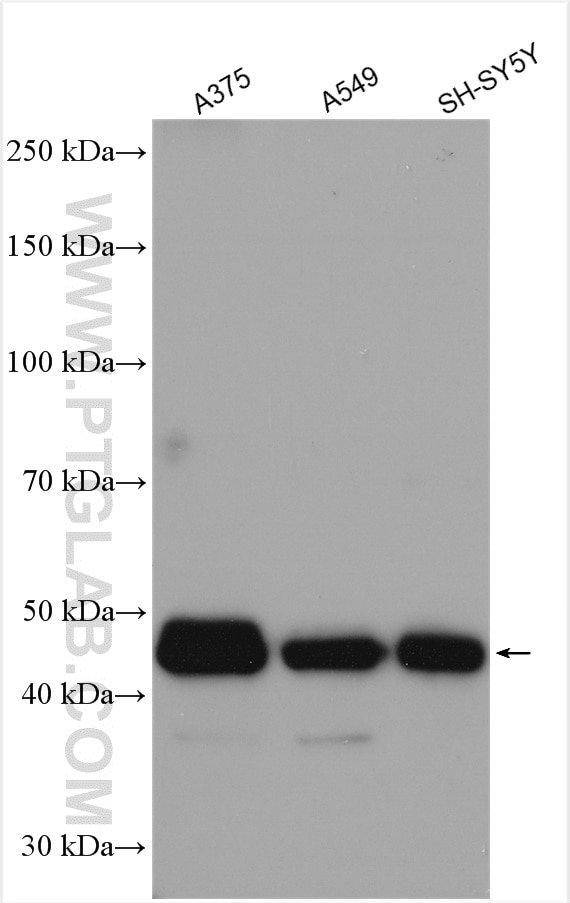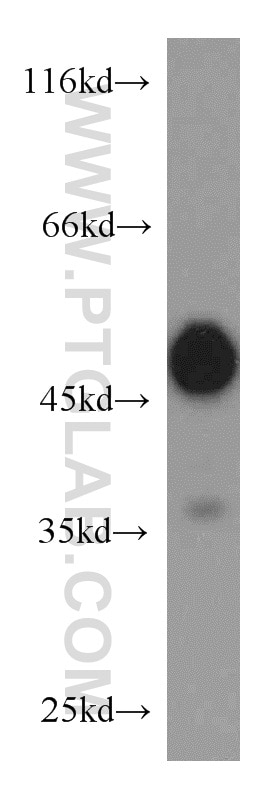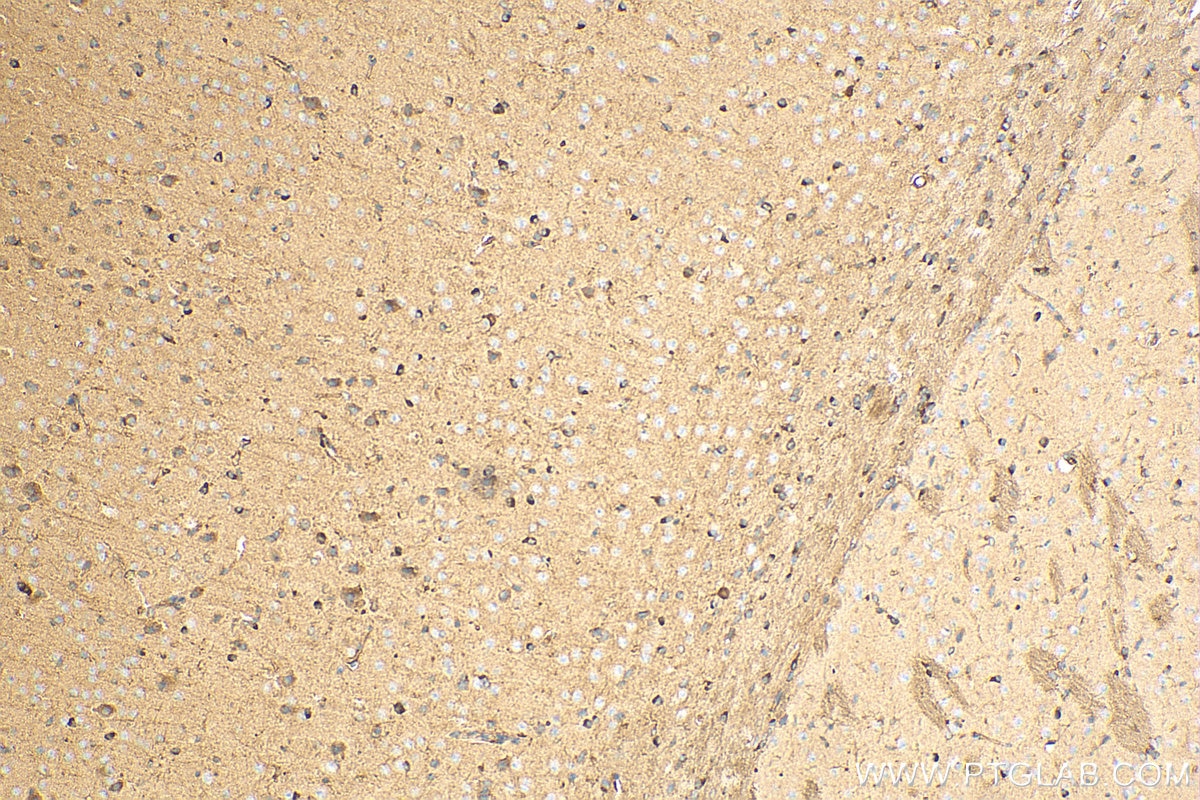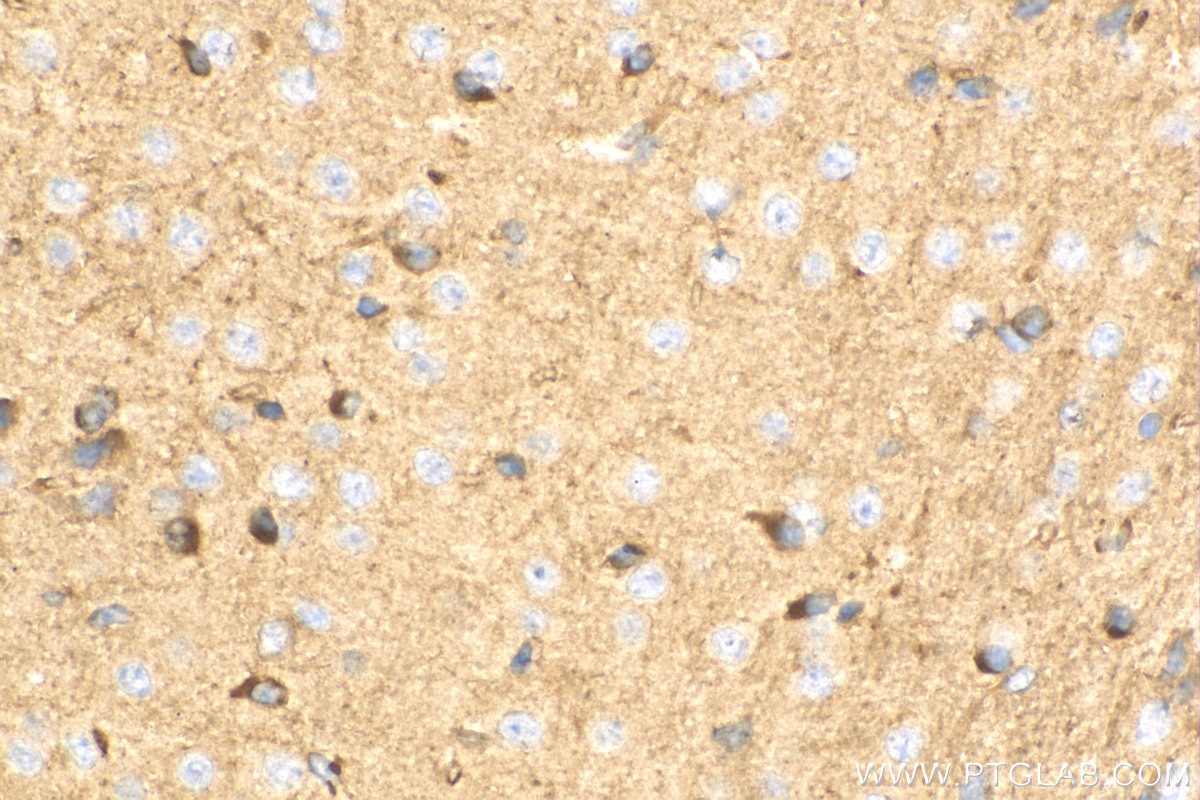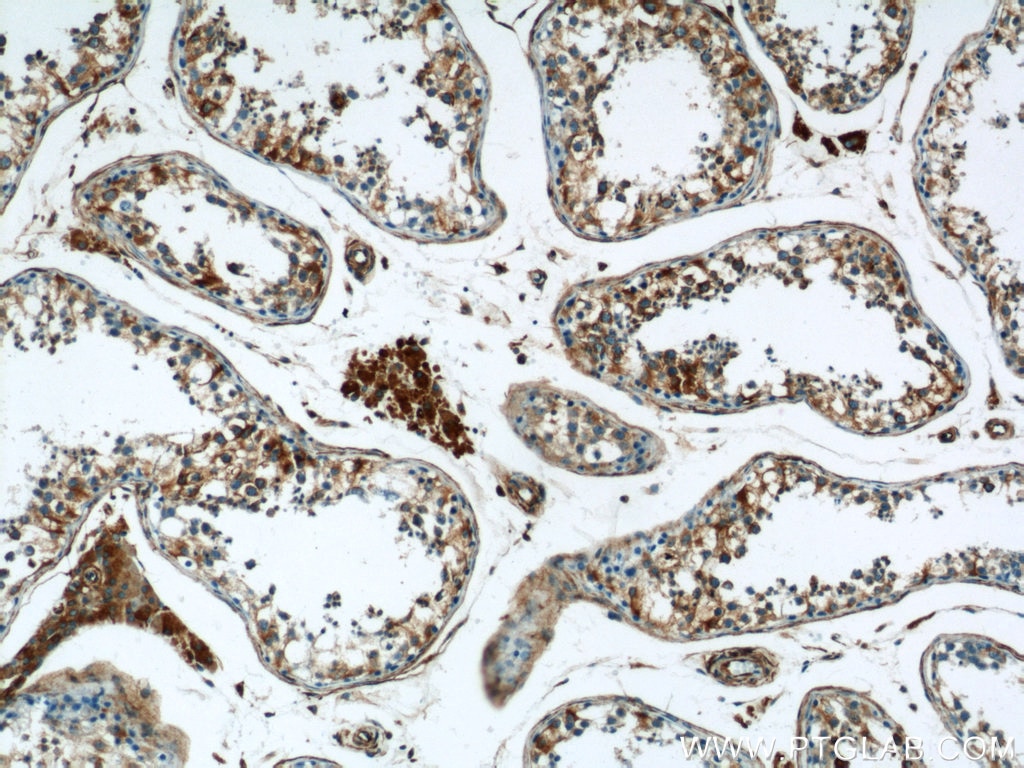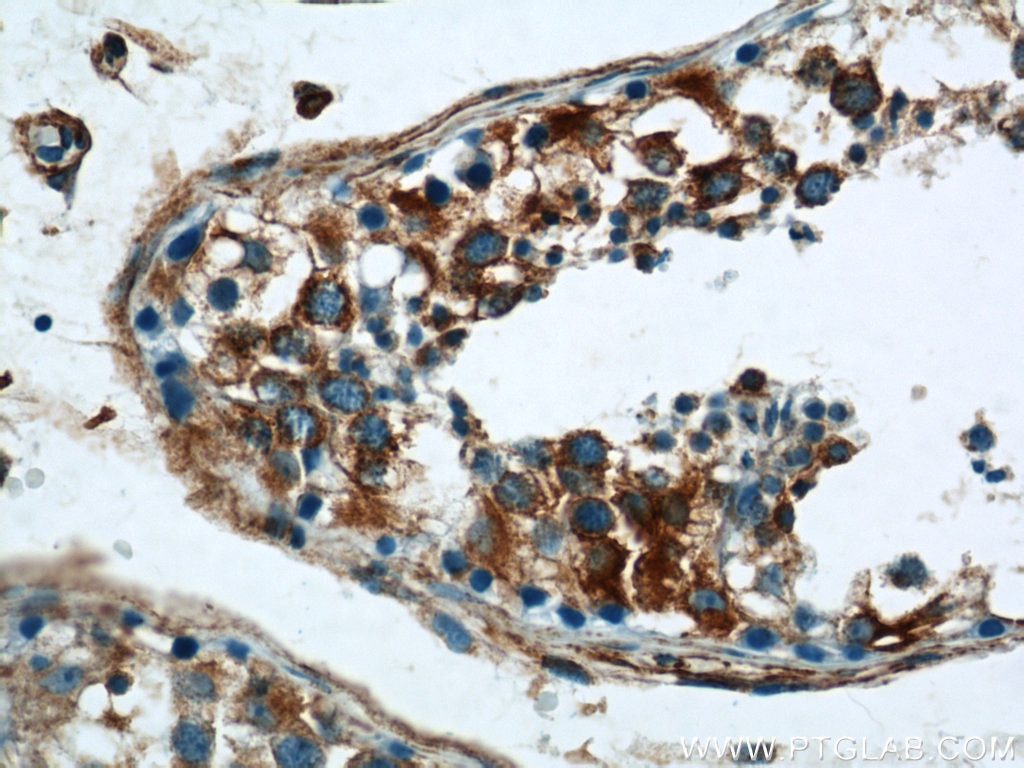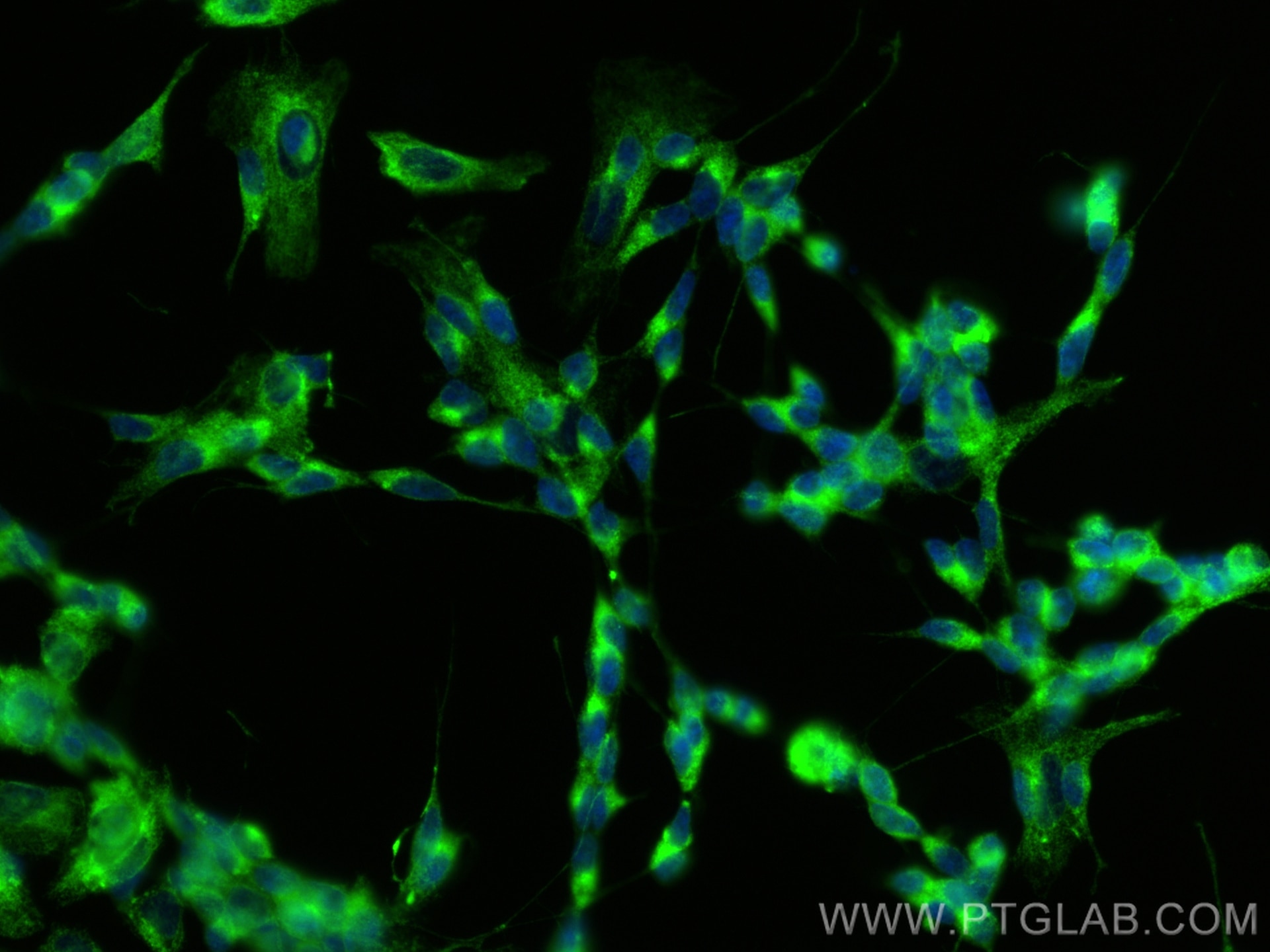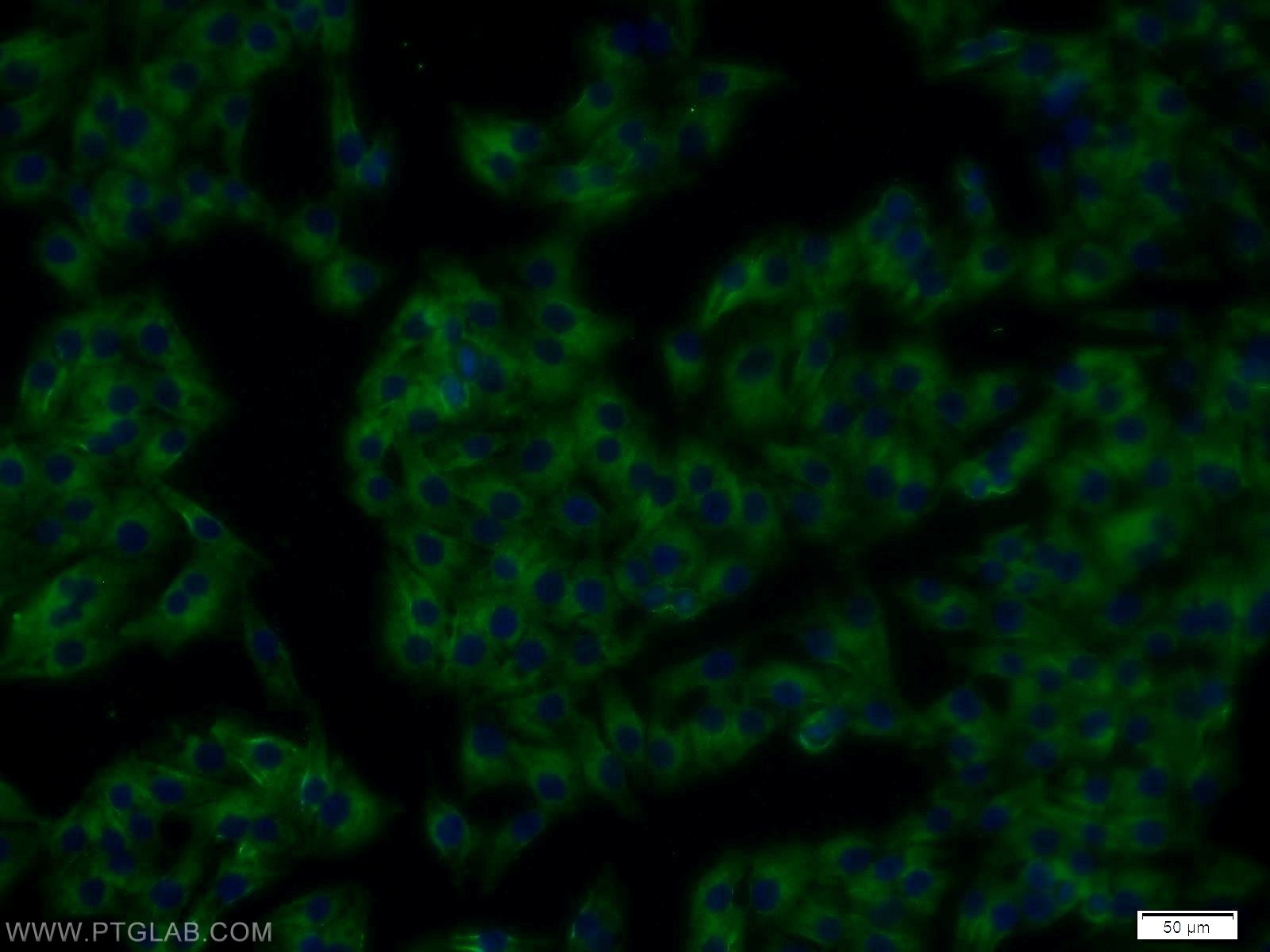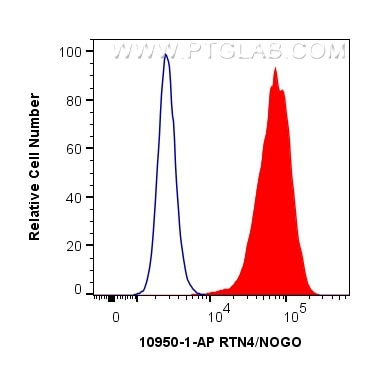- Phare
- Validé par KD/KO
Anticorps Polyclonal de lapin anti-RTN4/NOGO
RTN4/NOGO Polyclonal Antibody for WB, IHC, IF/ICC, FC (Intra), ELISA
Hôte / Isotype
Lapin / IgG
Réactivité testée
Humain, souris et plus (1)
Applications
WB, IHC, IF/ICC, FC (Intra), ELISA
Conjugaison
Non conjugué
N° de cat : 10950-1-AP
Synonymes
Galerie de données de validation
Applications testées
| Résultats positifs en WB | cellules A375, cellules A549, cellules HepG2, cellules SH-SY5Y |
| Résultats positifs en IHC | tissu cérébral de souris, tissu testiculaire humain il est suggéré de démasquer l'antigène avec un tampon de TE buffer pH 9.0; (*) À défaut, 'le démasquage de l'antigène peut être 'effectué avec un tampon citrate pH 6,0. |
| Résultats positifs en IF/ICC | cellules SH-SY5Y, cellules A375 |
| Résultats positifs en FC (Intra) | cellules HeLa, |
Dilution recommandée
| Application | Dilution |
|---|---|
| Western Blot (WB) | WB : 1:5000-1:50000 |
| Immunohistochimie (IHC) | IHC : 1:50-1:500 |
| Immunofluorescence (IF)/ICC | IF/ICC : 1:200-1:800 |
| Flow Cytometry (FC) (INTRA) | FC (INTRA) : 0.40 ug per 10^6 cells in a 100 µl suspension |
| It is recommended that this reagent should be titrated in each testing system to obtain optimal results. | |
| Sample-dependent, check data in validation data gallery | |
Applications publiées
| KD/KO | See 2 publications below |
| WB | See 7 publications below |
| IF | See 3 publications below |
Informations sur le produit
10950-1-AP cible RTN4/NOGO dans les applications de WB, IHC, IF/ICC, FC (Intra), ELISA et montre une réactivité avec des échantillons Humain, souris
| Réactivité | Humain, souris |
| Réactivité citée | rat, Humain, souris |
| Hôte / Isotype | Lapin / IgG |
| Clonalité | Polyclonal |
| Type | Anticorps |
| Immunogène | RTN4/NOGO Protéine recombinante Ag1392 |
| Nom complet | reticulon 4 |
| Masse moléculaire calculée | 130 kDa |
| Poids moléculaire observé | 45-50 kDa |
| Numéro d’acquisition GenBank | BC012619 |
| Symbole du gène | NOGO |
| Identification du gène (NCBI) | 57142 |
| Conjugaison | Non conjugué |
| Forme | Liquide |
| Méthode de purification | Purification par affinité contre l'antigène |
| Tampon de stockage | PBS avec azoture de sodium à 0,02 % et glycérol à 50 % pH 7,3 |
| Conditions de stockage | Stocker à -20°C. Stable pendant un an après l'expédition. L'aliquotage n'est pas nécessaire pour le stockage à -20oC Les 20ul contiennent 0,1% de BSA. |
Informations générales
Reticulon (RTN) proteins are a group of membrane-bound proteins that largely reside in endoplasmic reticulum (ER) (PMID: 18177508). Reticulon proteins share a common sequence feature, the reticulon homology domain (RHD). They are involved in shaping the tubular endoplasmic reticulum network, membrane trafficking, inhibition of axonal growth, and apoptosis (PMID: 24218324). Four mammalian reticulons (RTN1-4) exist. RTN4 (also known as Neurite outgrowth inhibitor or Nogo) is a myelin-associated neurite growth inhibitory protein. Some isoforms of RTN4 have been described. RTN4A (Nogo-A, runs at ~200 kDa), RTN4B (Nogo-B, 40-55 kDa), and RTN4C (Nogo-C, 22-25 kDa) are three major isoforms (PMID: 31092426; 16469703).
Protocole
| Product Specific Protocols | |
|---|---|
| WB protocol for RTN4/NOGO antibody 10950-1-AP | Download protocol |
| IHC protocol for RTN4/NOGO antibody 10950-1-AP | Download protocol |
| IF protocol for RTN4/NOGO antibody 10950-1-AP | Download protocol |
| Standard Protocols | |
|---|---|
| Click here to view our Standard Protocols |
Publications
| Species | Application | Title |
|---|---|---|
PLoS Biol Reticulon and CLIMP-63 regulate nanodomain organization of peripheral ER tubules.
| ||
Autophagy Dengue and Zika viruses subvert reticulophagy by NS2B3-mediated cleavage of FAM134B. | ||
J Cell Sci SEC24A facilitates colocalization and calcium flux between endoplasmic reticulum and mitochondria. | ||
Drug Des Devel Ther Tanshinone IIA Promotes Axonal Regeneration in Rats with Focal Cerebral Ischemia Through the Inhibition of Nogo-A/NgR1/RhoA/ROCKII/MLC Signaling. | ||
Neurol Res Erythropoietin attenuates axonal injury after middle cerebral artery occlusion in mice. | ||
NPJ Parkinsons Dis Deficiency of Perry syndrome-associated p150Glued in midbrain dopaminergic neurons leads to progressive neurodegeneration and endoplasmic reticulum abnormalities |
